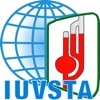|
The Scientific and Technical Directorate (STD) coordinates the work of the divisions. Chairmen and members of divisions who are not Executive Council members participate at EC sessions as observers with the right to speak but not to vote. The interests of IUVSTA encompass not only vacuum per se, but those disciplines that use vacuum as an important tool. Steering Committees are formed from time to time to promote activity in new fields. Such steering committees can form the nucleus of a new division. The Applied Surface Science and Nanometer Structures Divisions followed this route. IUVSTA divisions coordinate and organize the technical program of the triennial International Vacuum Congresses (IVC) and Conferences sponsored by the Union. International Vacuum Congress sessions are divided on the basis of the divisional structure, and each division plays an important role in the selection of scientific papers, invited speakers, and moderators. Divisional co-sponsorship of technical sessions is encouraged.
|
||||||||
|
This division focuses on the application of the concepts and tools of surface science to problems in solid state physics and chemistry and materials science and technology. Current emphasis is on characterization of surfaces and interfaces and the quantification of surface analysis techniques. The division also represents IUVSTA on ISO Committee TC201 on Surface Chemical Analysis.
|
||||||||
|
|
||||||||
|
This division focuses on the interaction of biological fluids with solid surfaces. The applications are linked with biomaterials, biotechnology, personal care and medical devices, food production, but also adhesion, corrosion and fouling. |
||||||||
|
|
||||||||
|
This division focuses on the science and technology pertaining to preparation, growth, processing and characterizion of materials used in device fabrication. Typical interests include silicon and compound semiconductors, the structure of interfaces and their growth and processing, CVD and MBE deposition, e-beam and photo-lithography, plasma- and ion-etching techniques, surface chemical behavior, quantum well structures, opto-electronics, VLSI/submicron devices, interconnects and packaging. |
||||||||
|
This division focuses on experimental and theoretical research on nanometer sized structures, as well as technological consequences of those structures. Its interests would include innovative techniques to fabricate one- and zero-dimensional structures, analytical tool development which provides nanometer-scale resolution with composition/structure/property characterization, exploration of new science and the models for understanding nanometer structures, and exploitation of nanometer-structure properties with an eye toward new technologies.
|
||||||||
|
This division (formerly known as the Fusion Division) is concerned with gas fueling and pumping of large vacuum vessels; design and construction of such vessels, radioactive gas storage, recovery, and handling; pressure measurement, leak testing and repair of plasma devices and fusion reactors including particle beam injection; plasma wall interactions; plasma diagnostics (magnetic confinement fusion (MCF) and inertial confinement fusion (ICF); vacuum materials development; coatings, claddings, ceramics and alloys; ICF microtarget development, and neutral and negative ion beam injector technology. Also of concern are interaction of plasmas with and characterization of plasmas near surfaces. |
||||||||
|
Surface engineering (SE) deals with the materials science and technology of modifying and improving the surface properties of materials for protection in demanding contact conditions or aggressive environments, as well as designing different functionalities with respect to of combination of electrical, optical, thermal, chemical, and biochemical responses, including adaptive and active control of functions. Strategies include both substrate surface modification via plasma, ion-, electron-, laser-beam processes, as well as deposition processes such as physical vapor deposition, chemical vapor deposition , spray, sol-gel, etc. SE involves multiple/hybrid techniques to form gradient near-surface architectures with special attention to interface design. Areas of scientific interest span the full spectrum of fundamental scientific understanding via modeling, synthesis-structure-property-performance relationships, to real-world engineering applications. |
||||||||
|
Experimental and theoretical research on solid surfaces and interfaces, as well as gas-solid interactions, broadly define the scope of this division. Current emphasis is on electronic, ion, atom, and photon interactions with surfaces and on the structure, electronic properties, and dynamics of surface processes. The latter include surface reactions, diffusion, and catalysis.
|
||||||||
|
This division is devoted to production and use of films from research to device and mechanical applications. Its interests include preparation techniques, including new technologies, such as photon-, electron-, and ion-enhanced deposition and processing, electrical and mechanical properties, process monitoring, and analytical characterization methods. Interests extend to diffusion and electromigration, growth, structure, epitaxy, nucleation, and chemical phenomena at thin film interfaces.
|
||||||||
|
This division deals with all phenomena impacting the production, measurement, and analysis of vacuum. The division is interested in the permeability of materials, vacuum pumping, outgassing and contamination, as well as new leak detection techniques and improved total and partial pressure measurements. Standards for these and other measurements are continually reviewed by the Division.
|
